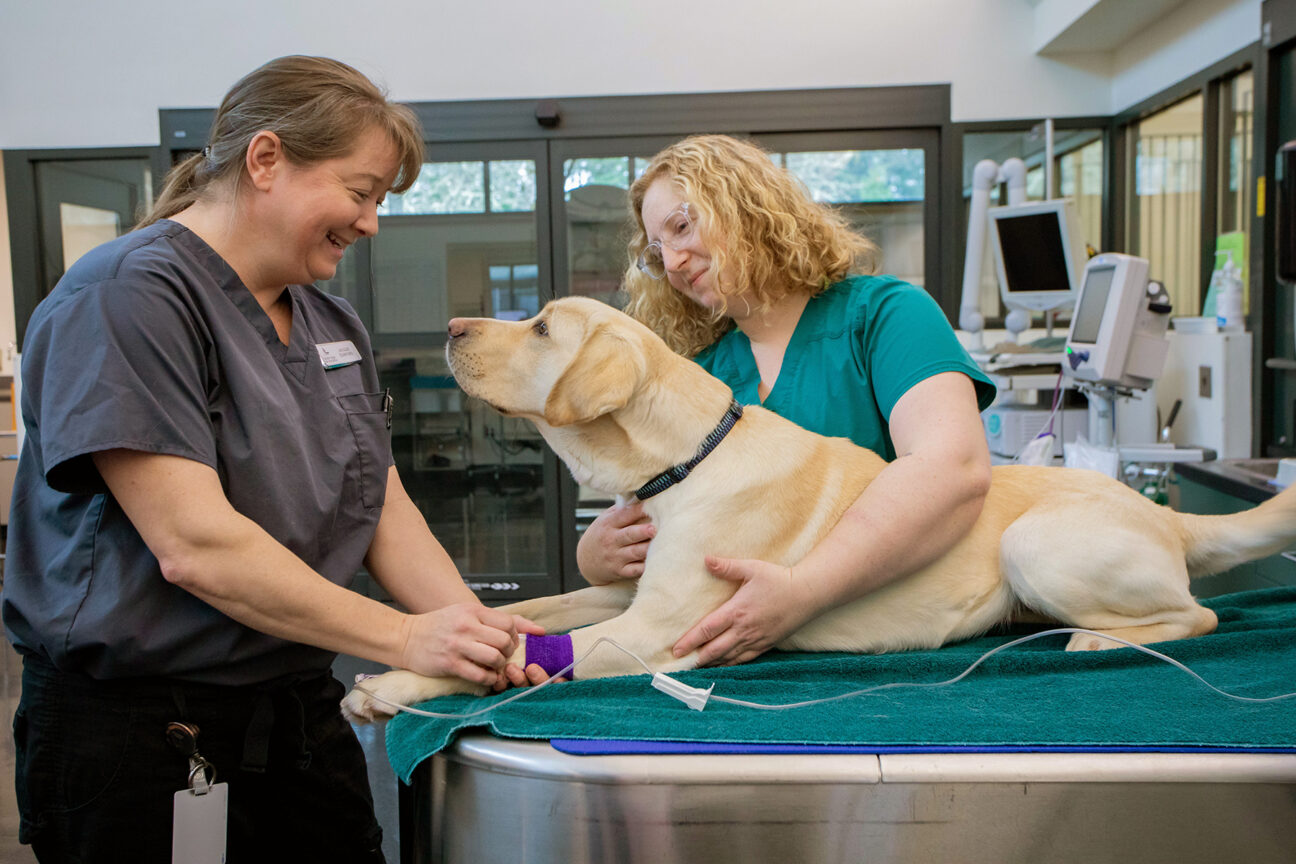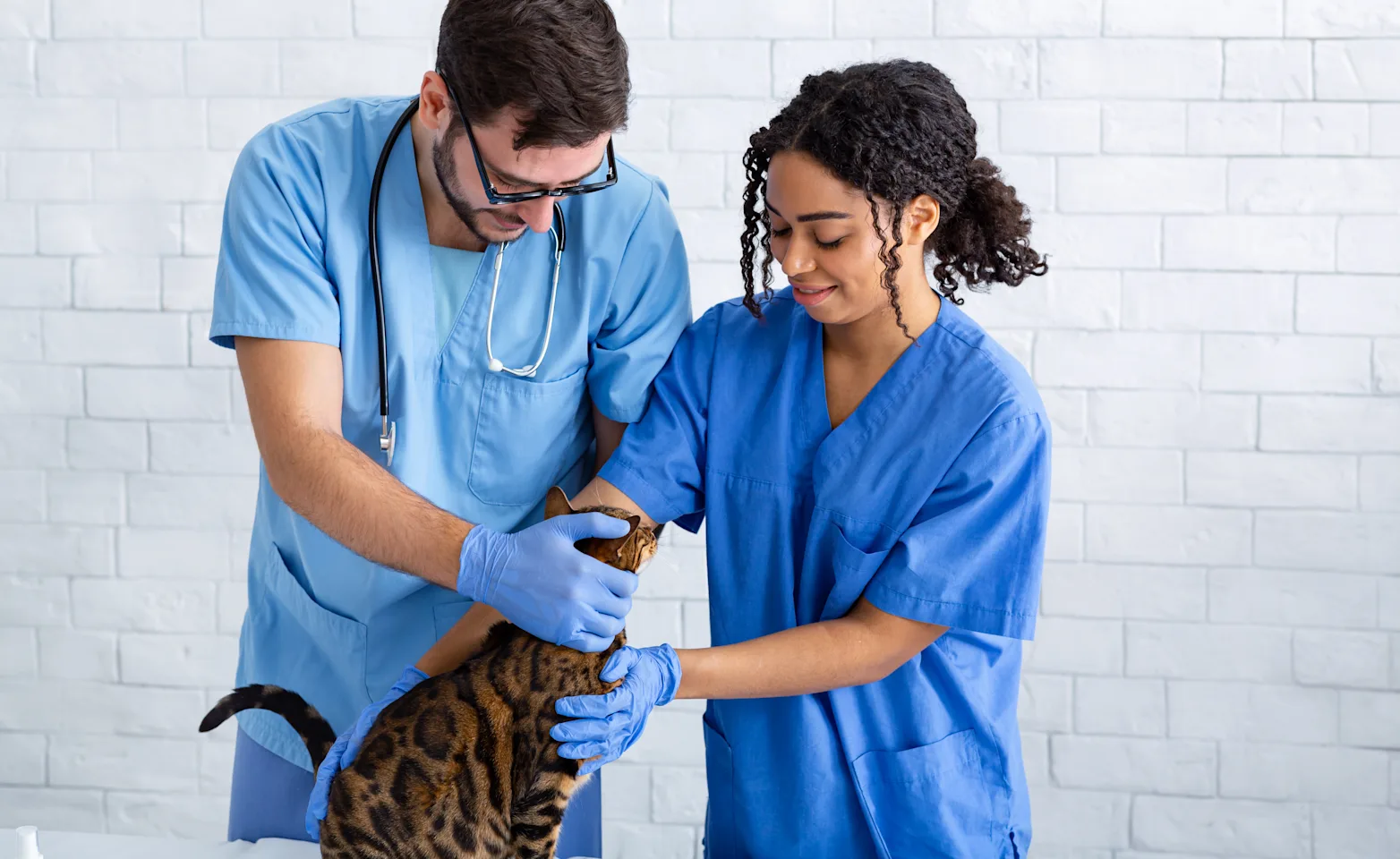All About Vet Surgery: Comprehending the Value of Professional Take Care Of Your Pet dogs
Vet surgical treatment is a vital component of animal health care. It encompasses numerous treatments, from routine elective surgical treatments to immediate interventions. Comprehending the intricacies of these surgical treatments can aid family pet proprietors make notified decisions. The preparation, execution, and healing stages are essential for making sure the wellness of animals. With appropriate expertise, proprietors can navigate the intricacies of veterinary care. What variables should be taken into consideration prior to an animal undergoes surgery?
Sorts Of Veterinarian Surgeries
When a pet dog calls for surgical treatment, recognizing the different sorts of veterinarian surgeries can help family pet owners make notified choices. Veterinary surgical treatments can be extensively categorized right into three main kinds: optional, urgent, and emergency situation surgical procedures. Elective surgical procedures, such as spaying or neutering, are intended treatments that are not quickly dangerous. Immediate surgical procedures, like those for foreign body removal, should be carried out soon but are not deadly in the minute. Emergency surgical treatments, such as those attending to serious trauma or internal blood loss, are essential and call for immediate attention.Additionally, surgeries can vary in complexity, varying from minimally invasive laparoscopic treatments to much more substantial open surgical procedures. Each sort of surgical procedure lugs its very own risks and recovery procedures. Recognizing these classifications enables pet proprietors to involve in meaningful conversations with veterinarians, bring about better outcomes for their precious pets.
Planning for Your Pet's Surgical procedure
Getting ready for a family pet's surgical treatment includes a comprehensive list to assure all fundamentals are covered. Efficient interaction with the vet is important for recognizing the procedure and any needed pre-operative steps - tplo surgery for dogs. In addition, having clear post-operative treatment guidelines will certainly assist proprietors give the finest support for their recuperating animals
Pre-Surgery List Fundamentals
Assuring a smooth surgical experience for an animal needs cautious prep work and focus to detail. A pre-surgery checklist is necessary for family pet owners to follow. Verifying the scheduled surgical treatment day and time is essential. Proprietors should additionally confirm that their pet has actually fasted according to the veterinarian's instructions, commonly for 8-12 hours before surgical treatment. Collecting essential medical documents, consisting of vaccination history, is necessary for the veterinarian's testimonial. It is also recommended to prepare a comfy area in your home for the pet dog's healing after surgical procedure. Proprietors ought to have a plan for transport to and from the veterinary center, making certain that the pet dog is safe and secure and comfy throughout the trip. Complying with these actions can greatly enhance the medical experience.
Connecting With Your Veterinarian

Efficient communication with the vet is necessary for an effective surgical experience for animals. Proprietors ought to be prepared to review their family pet's case history, consisting of any type of pre-existing problems, medicines, and allergies. This info helps the veterinarian examine dangers and tailor the surgical plan as necessary. Furthermore, animal owners need to ask questions pertaining to the treatment, anesthesia, and anticipated results to assure they totally understand the procedure. Clarifying any type of uncertainties can relieve anxiety for both the pet and the proprietor. It is also essential to communicate any behavioral modifications or worries observed in the animal leading up to the surgical treatment. Inevitably, clear dialogue promotes depend on and cooperation, making sure that pet dogs receive the best feasible care during their surgical journey.
Post-Operative Care Directions
After talking about the surgery with the vet, pet dog owners need to concentrate on post-operative care directions to promote a smooth healing for their pet dogs. These directions commonly consist of monitoring the surgical site for signs of infection, such as soreness or discharge. Pets may require to be kept tranquil and confined to stop too much motion that could disrupt recovery. Discomfort monitoring is important, so proprietors must follow the veterinarian's advice on providing medicines. Furthermore, nutritional limitations may be encouraged to avoid intestinal distress. Regular follow-up visits are essential to guarantee appropriate healing and address any type of worries. By adhering to these post-operative care guidelines, pet owners can greatly add to their pet's healing and general wellness.
The Surgery Explained
The surgery for family pets incorporates crucial steps that ensure their security and recuperation. Pre-surgery preparations are important for minimizing risks, while post-operative treatment standards play a crucial duty in advertising healing. Comprehending these elements aids animal proprietors browse the surgical experience better.
Pre-Surgery Preparations
Before a family pet goes through surgery, numerous essential prep work must happen to ensure a secure and effective treatment. Initially, a comprehensive veterinary exam is necessary to evaluate the family pet's general health and wellness and identify any prospective threats. This might include blood tests, imaging, or various other diagnostics. The veterinarian will certainly likewise review anesthetic options tailored to the family pet's particular needs. In addition, pet dog owners are commonly advised to withhold food and water for a defined time before surgical treatment to reduce the danger of complications during anesthetic. It is necessary for owners to offer a complete case history, including any drugs or allergic reactions, making certain the medical team has all needed information. Correct communication and adherence to pre-surgery guidelines can considerably improve the end result of the treatment.
Post-Operative Care Standards
Appropriate post-operative treatment is essential for making sure a family pet's recuperation complying with surgical procedure. After the treatment, animals need to be checked carefully for any indicators of problems, such as extreme bleeding, swelling, or unusual behavior. It is necessary to comply with the vet's guidelines relating to medications, consisting of pain relievers and antibiotics. Animals should be maintained in a peaceful, comfy setting to lower tension and promote healing. Limiting task is crucial; short, leashed strolls might be necessary, but jumping or running must be prevented. Normal follow-up visits should be set up to assess the recovery procedure. Furthermore, the surgical website must be maintained clean and completely dry, with any kind of signs of infection reported to a veterinarian quickly. Following these guidelines enhances healing end results.
Anesthesia and Pain Administration
Effective anesthesia and discomfort administration are essential components of vet surgery, guaranteeing that pet dogs stay comfortable and risk-free throughout the treatment. Vets examine each pet dog's individual requirements, considering elements such as age, weight, health and wellness condition, and the type of surgical treatment being performed.Anesthesia methods typically consist of a mix of pre-anesthetic medications, induction representatives, and inhalant anesthetics, enabling precise control over the pet's degree of awareness. Tracking during surgical treatment is critical; veterinarians continuously observe essential signs to deal with any kind of possible difficulties promptly.Pain administration methods may entail opioids, non-steroidal anti-inflammatory medicines (NSAIDs), and neighborhood anesthetics, customized to the pet dog's certain situation. This complex strategy helps decrease discomfort and advertises a smoother surgical experience. By focusing on reliable anesthesia and discomfort management, vet professionals boost the overall well-being of pet dogs undergoing medical treatments, guaranteeing they get the highest requirement of care.
Post-Operative Treatment and Recovery
Complying with surgery, the emphasis shifts to post-operative care and recuperation, which is vital for guaranteeing a pet dog's safe return to normal tasks. Throughout this period, pet dogs require a quiet, comfy atmosphere to aid healing. Owners must carefully monitor their pet dogs for any type of indicators of pain or unusual behavior.Veterinary standards typically consist of details instructions related to drug administration, injury treatment, and dietary changes. It is essential to comply with these recommendations to lessen difficulties and promote recovery. Pets might require to be limited from vigorous tasks, such as running or leaping, throughout their recovery period (tplo surgery).Regular follow-up visits with the veterinarian enable tracking of the pet's development and timely modifications to the care plan. Offering psychological assistance and companionship can additionally enhance a pet's recuperation experience, helping to relieve stress and anxiety and anxiety. On the whole, persistent post-operative care plays a substantial function in attaining an effective recovery
Identifying Difficulties After Surgical Procedure
Exactly how can family pet proprietors identify issues after surgical procedure? read the article Recognition of details indicators is important for making certain the health of pets throughout recovery. Common signs consist of extreme swelling, redness, or discharge at the medical site, which may indicate infection. In addition, consistent discomfort, indicated by whining or unwillingness to move, must trigger instant focus. Modifications in appetite or water intake can also indicate difficulties; a decrease in these actions might signal discomfort or distress.Moreover, pet dog proprietors ought to monitor their pet dogs for any type of unusual habits, such as sleepiness or difficulty breathing, as these can be signs of serious problems. Vomiting or looseness of the bowels adhering to surgical treatment may require urgent veterinary evaluation. Acknowledging these problems early can substantially affect a family pet's healing procedure, stressing the importance of watchfulness and prompt communication with a veterinarian for any kind of concerning symptoms.
The Function of Veterinary Professionals in Surgical Treatment
Veterinary professionals play a crucial role in ensuring the safety and security and success of operations for pets, specifically following surgical procedure when keeping track of and treatment are paramount. These experts consist of veterinarians, vet specialists, and assistance team, every one of whom contribute specialized skills to the surgical process.Before surgery, veterinarians carry out detailed evaluations to evaluate the family pet's wellness, making sure that any hidden problems are managed. Throughout the procedure, the surgical team supplies anesthesia, maintains sterilized atmospheres, and checks crucial indicators, very important for reducing risks.Post-operative care is just as substantial; veterinary experts observe for problems, manage discomfort, and guide proprietors on recovery practices. Their experience allows them to recognize very early indications of distress or infection, making certain prompt intervention. Ultimately, the collective initiatives of veterinary professionals in medical care foster a secure setting, advertising the health of pets throughout the surgical trip.

Often Asked Questions
Exactly how Do I Pick the Right Vet Specialist for My Animal?
Picking the right veterinary surgeon includes looking into certifications, checking out testimonials, and evaluating the center's environment. It is necessary to reflect on the specialist's experience with certain procedures and their communication style when deciding.
What Prevail Misconceptions Regarding Veterinarian Surgeries?
Typical mistaken beliefs regarding vet surgical procedures consist of beliefs this page that they are always dangerous, unnecessary, or only for emergency situations. Many pet proprietors underestimate the benefits of preventative procedures and the skill associated with vet surgical treatment.
Exactly How Much Will My Pet's Surgery Expense?
The expense of an animal's surgery can vary considerably based upon aspects such as the kind of treatment, the veterinarian's experience, and geographic area (animal emergency care bellingham). Typically, expenses range view website from a few hundred to a number of thousand dollars

Can My Pet Dog Consume Prior To Surgical Treatment?
Before surgical treatment, it is typically suggested that pet dogs refrain from eating for a details period. This fasting assists reduce the risk of complications during anesthesia. Proprietors should consult their vet for exact directions tailored to their pet's needs.
Suppose My Animal Has Pre-Existing Health Issues?
When a pet has pre-existing wellness conditions, it's vital for the vet to analyze these variables prior to surgery. This assessment assurances appropriate preventative measures are taken, lessening dangers and maximizing the animal's general safety during the procedure.